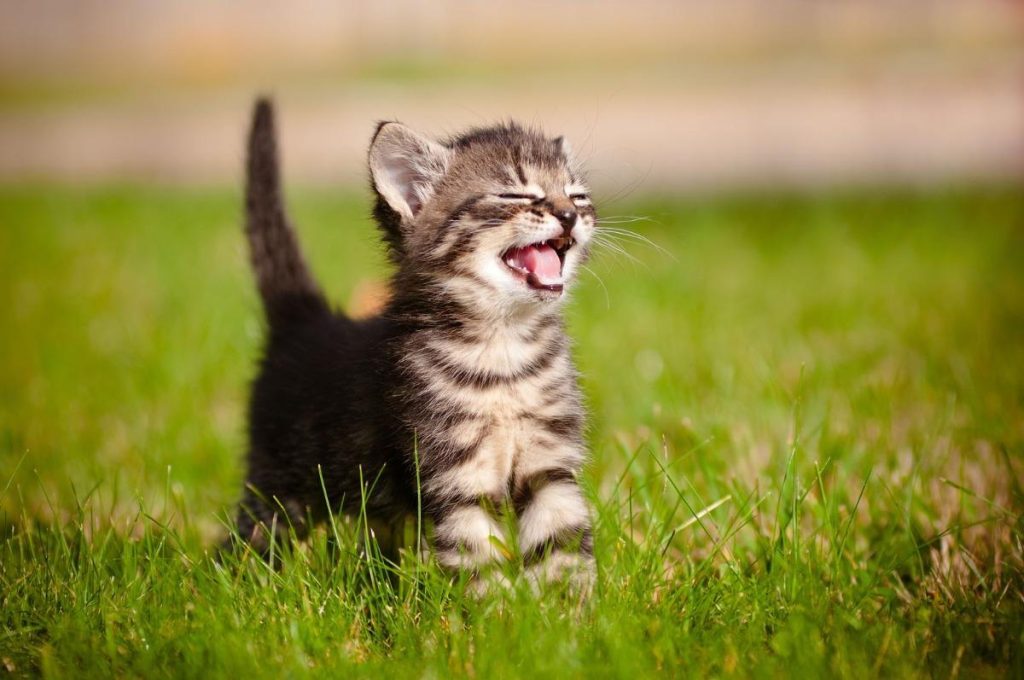Cat Training Techniques for Beginner Owners

Understanding the Foundations of Cat Training
Becoming a cat owner is an exciting journey filled with unforeseen joys and challenges. For beginner owners, understanding effective cat training techniques can transform this experience into a harmonious bond with your feline friend. Contrary to popular belief, cats can be trained just like dogs, but their unique nature lends itself to different methods of learning.
Training your cat might seem daunting, but it’s not only achievable—it’s essential. A well-trained cat doesn’t just follow commands; they become more adaptable within their environment. Utilizing the right methods can lead to a well-mannered pet and a more engaging relationship, making life together more enjoyable for both of you.
Key Training Techniques
- Positive Reinforcement: This fundamental technique involves rewarding good behavior, which enhances learning. For instance, using treats to reward your cat for using the litter box can solidify this behavior. In Nigeria, where traditional views of pet ownership sometimes overlook training, understanding the role of positive reinforcement can shift perspectives, highlighting that cats are capable of learning just as much as dogs.
- Consistency: Regularity in training sessions creates a structured environment. Set specific times daily for training, even if it’s only five minutes. Abiding by a routine can help your cat learn more efficiently. A consistent approach means that your cat will better understand what behaviors are expected of them.
- Patience: Gradual progress is normal. Training sessions can be taxing, and it’s vital to maintain a patient attitude throughout the process. If challenges arise, avoiding frustration can keep the atmosphere light and encouraging, fostering a trusting relationship between you and your pet. Celebrating small victories—like your cat scratching on a designated post rather than the furniture—can keep motivation high.
Cultural Perspectives and Enrichment
In Nigeria, where cats are often seen as family members, it’s particularly important to incorporate cultural perspectives in training. Adapting techniques to suit your lifestyle ensures not just obedience but also enrichment for your pet. For example, you might want to use local treats or toys made from readily available materials to encourage your cat’s engagement.
As you delve into this article, you will discover strategies that resonate with both you and your cat. Whether it’s litter box training, encouraging scratching in appropriate areas, or building a repertoire of tricks like “high five” or “roll over,” the techniques covered will equip you for success.
By focusing on the needs and behaviors of your cat within the context of your cultural and social environment, you can create a fulfilling life for your new companion. Let’s embark on this enlightening journey into cat training, ensuring your newfound friend thrives in a loving and well-structured environment, while also harmonizing with daily life in Nigeria.

RECOMMENDED: Check out this similar article
Essential Training Techniques for Every New Cat Owner
When embarking on the journey of cat ownership, it’s crucial to recognize that successful training hinges on understanding feline behavior. Cats are inherently independent and may not respond to commands in the same way dogs do. However, this does not mean that they cannot be trained. Emphasizing specific cat training techniques can lead to a positive experience for both you and your cat. Below are some essential techniques that every new cat owner should consider.
Building a Strong Bond through Play
One of the most effective ways to train your cat is through play. Cats are natural hunters, and engaging them in play mimics their instinctual behaviors while also serving as a training tool. Activities such as chasing feather toys or interactive laser pointers stimulate their minds and bodies. This form of active training not only results in a healthier cat but also strengthens the bond between you and your pet. Consider incorporating short play sessions into your daily routine; this will not only keep your feline entertained but also build trust and rapport.
Litter Box Training
Litter box training is often the first step in teaching your cat acceptable behaviors. Most cats instinctively know to bury their waste, which means that proper litter box training can be a hassle-free experience with the right approach. Here are some steps that new owners should follow:
- Select the right litter box: Choose a box that is appropriate for your cat’s size and preferences. Covered or uncovered, the box should be easily accessible.
- Choose suitable litter: Cats may prefer different types of litter. Experiment with clumping versus non-clumping or clay versus natural brands to find what your cat enjoys.
- Location matters: Place the litter box in a quiet, low-traffic area that offers privacy. This will encourage your cat to use it without feeling stressed.
- Reward successes: Whenever your cat uses the litter box correctly, provide positive reinforcement, such as petting or a small treat. This solidifies good habits.
Utilizing Commands and Clicker Training
Clicker training, a practice borrowed from dog training, can effectively teach cats specific commands. The process is simple: use a clicker to make a sound whenever the cat performs a desired action, followed by offering a treat. This builds a connection between the action and the reward. For instance, using the clicker while teaching your cat to “sit” can dramatically enhance their learning experience. Sessions should be short—typically around five minutes—to maintain your cat’s interest and prevent them from becoming overwhelmed.
For owners in Nigeria, applying local methods or integrating cultural practices can enhance training effectiveness. For example, using locally sourced treats or involving family members in the process may provide additional motivation and support for both the cat and its new owner.
By adopting these foundational techniques, you prepare not only for a well-trained pet but also for a fulfilling companionship that thrives on understanding and patience. As you proceed, stay tuned for more insights and advanced strategies to elevate your cat training journey.
| Cat Training Techniques | Overview |
|---|---|
| Positive Reinforcement | Using treats to reward desirable behavior creates a trusting relationship. |
| Clicker Training | A unique sound signals the cat that they have performed a task correctly, enhancing learning. |
| Litter Box Training | Establishing a routine helps cats to identify and use their litter area consistently. |
| Leash Training | Encourages outdoor exploration in a safe manner, increasing bonding time. |
Implementing effective cat training techniques is essential for beginner owners aiming to foster a well-behaved feline friend. Utilizing methods such as positive reinforcement not only enhances the learning experience, but also establishes mutual trust. Techniques like clicker training provide instant feedback, which is crucial for effective learning. Moreover, introducing straightforward practices such as litter box training is vital as it instills a sense of routine, benefiting both the owner and the pet. Leash training opens doors to new experiences, allowing cats to explore the outdoors safely. Each technique contributes significantly to the overall bond between owner and cat, making the journey of pet ownership both fulfilling and engaging. Therefore, embracing these training methods empowers beginner owners and sets the foundation for lifelong harmony.
LEARN MORE: This related article may interest you
Advanced Techniques to Enhance Your Cat’s Behavior
Once you have mastered the foundational training techniques, it’s time to delve into advanced methods that can further enhance your cat’s behavior and communication skills. These techniques not only promote better behavior but also contribute to a joyful household dynamic, making your journey as a cat owner more enriching.
Socialization Skills
Proper socialization is essential for a well-adjusted cat, especially in a bustling environment like Nigeria, where households often include family members, friends, and sometimes other pets. Start socializing your kitten or cat by exposing them gradually to various sounds, sights, and experiences. For instance, let your cat meet different people in a calm manner, ensuring that each encounter is positive. Use treats to reward them for calm behavior. This helps them develop confidence and reduces anxiety when faced with novel situations later in life.
Teaching Tricks and Commands
Beyond basic commands, teaching your cat fancy tricks can be a fun way to engage them mentally and physically. Techniques like “high five” or “roll over” can be developed through patience and consistency. Use the same clicker training methods for these tricks, starting with simple movements before gradually building complexity. Cats respond well to visual cues, so try demonstrating the trick yourself first before guiding your cat. Remember to keep the sessions short and joyful, cultivating a playful atmosphere.
Addressing Undesirable Behaviors
Training is not solely about reinforcing positive behaviors; it also involves managing challenges. Common issues such as scratching furniture or inappropriate meowing can be redirected through various techniques. Consider providing scratching posts made of sisal or cardboard to channel your cat’s natural instincts. When they start scratching your furniture, gently redirect them to the post with rewards for using it. In Nigeria, you could even create fun, homemade scratching surfaces using local materials to make the process engaging for both you and your cat.
Positive Reinforcement vs. Negative Reinforcement
Understanding the difference between positive reinforcement and negative reinforcement is key in cat training. Positive reinforcement, such as treats and praise, encourages your cat to repeat desired behaviors. On the other hand, negative reinforcement, which may include ignoring bad behavior or redirecting it, can also be effective but should be approached with caution. Harsh methods are not advisable, as they can damage the trust between you and your cat. Instead, focus on encouraging the good by highlighting desirable actions with enthusiasm and rewards.
Local Insights and Techniques
For cat owners in Nigeria, taking advantage of local customs can make training feel more special and personalized. Utilizing local treats, like small pieces of fish or chicken, can make training sessions more appealing to your cat. Family involvement can also enhance the experience—encouraging children or relatives to participate fosters a strong communal bond and teaches responsibility. Traditional training practices, such as using simple vocal cues that resonate culturally, can also be beneficial, allowing your cat to understand commands better.
As you continue to use these innovative techniques, you will find that training becomes a fulfilling and enjoyable journey. With patience and creativity, you can nurture a behaviorally sound and happy feline companion, ultimately enhancing the bond between you and your cat. Stay tuned for further tips on maintaining a harmonious life with your feline friend.
YOU MAY ALSO LIKE: Read read another article
Conclusion: Fostering a Harmonious Bond with Your Cat
In summary, cat training can be an enriching endeavor for both beginner owners and their feline companions. By employing positive reinforcement techniques, understanding the nuances of socialization, and harnessing local insights that resonate culturally, you can successfully shape your cat’s behavior and strengthen your bond. Training is not merely about curbing undesirable behaviors; it’s also an opportunity to enhance your cat’s well-being and create a fulfilling environment.
As you embark on this journey, remember that patience, consistency, and creativity are your greatest allies. Every cat is unique, and tailoring your training approach to suit your pet’s personality will yield the best results. Embrace the journey of teaching tricks, managing habits, and developing social skills, as these experiences can lead to a more harmonious existence in your household.
Moreover, involving family members in training sessions can foster a supportive community, making the experience enjoyable for everyone. As you explore various techniques, consider what local materials and customs can further enhance the process. From crafting homemade enrichment toys to utilizing beloved local snacks as rewards, the options are plentiful.
With the right mindset and tools, you will cultivate not just a well-trained cat but a deeply cherished companion. As you navigate the delightful world of cat training techniques, remain open to new discoveries, and always seek to deepen the connection with your furry friend.


